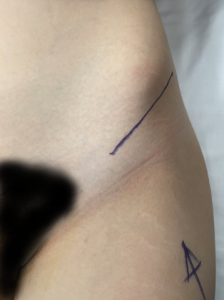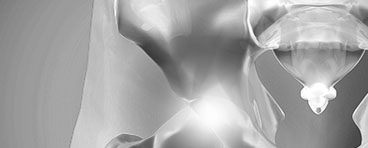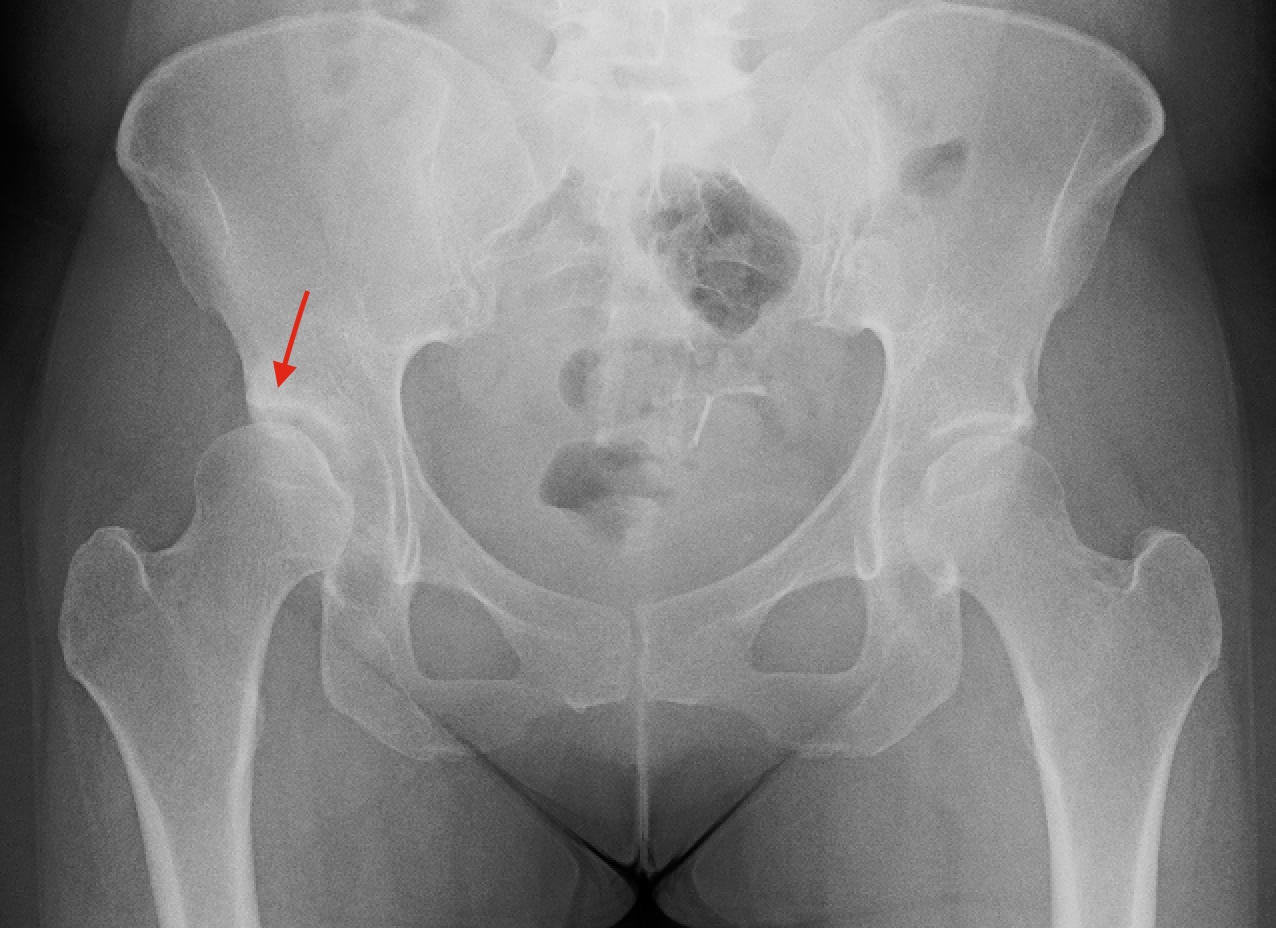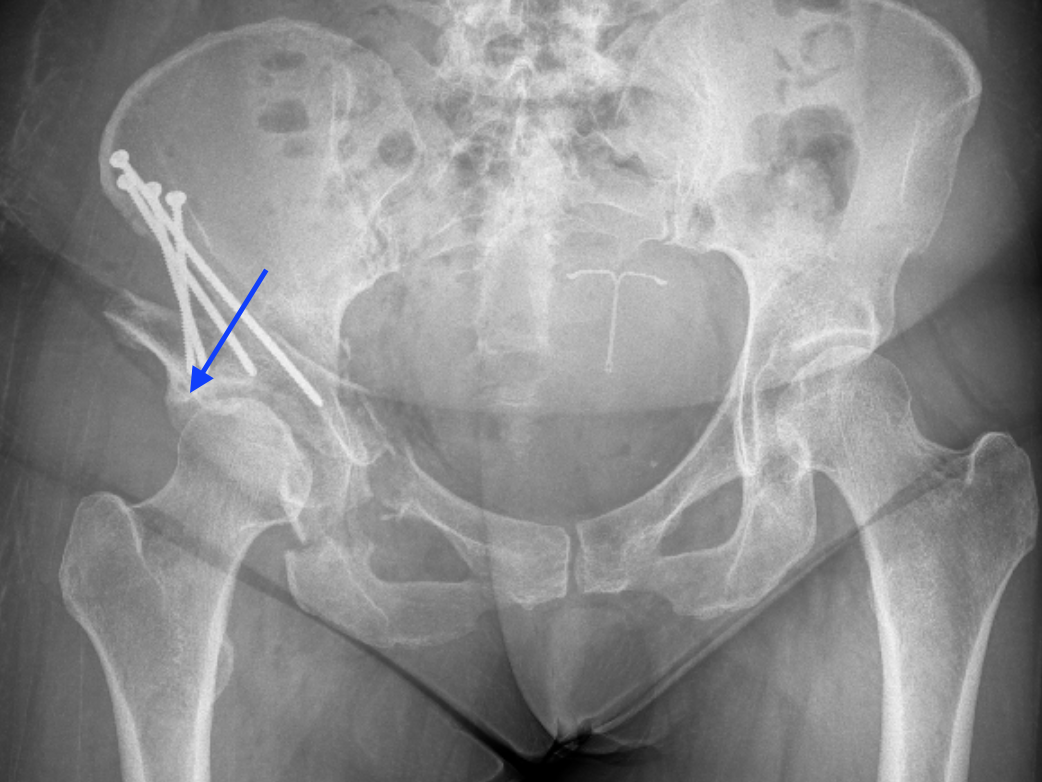Click on the links below to find out more
Periacetabular Osteotomy (PAO)
OVERVIEW
PAO surgery is a hip preservation surgery performed to correct a deformity in the acetabulum (hip socket) such as acetabular dysplasia. If this condition remains untreated, secondary arthritis commonly develops. Therefore, in order to relieve symptoms and improve the prognosis of the hip, this surgery is done to correct the bony anatomy and help normalize the load across the joint.
“Periacetabular” means around the acetabulum (hip socket). “Osteotomy” means to cut bone. Therefore, periacetabular osteotomy means to cut the bone around the acetabulum and reposition the hip socket. The PAO is a very effective procedure for the treatment of symptomatic acetabular dysplasia.
Dr Slattery is trained in a minimally invasive form of periacetabular osteotomy using a groin crease incision. An incision is made across the front of the hip joint to allow exposure of the hip and surrounding pelvis. Then specialised instruments are used with X-ray vision to perform controlled cuts of the pelvis and free the acetabulum from the pelvis. The acetabulum is repositioned and fixed in the new position with three or four screws after further checks with X-ray. This is a highly specialised procedure which is done by only a few surgeons worldwide. This revolutionary procedure was pioneered in Switzerland which is where Dr Slattery undertook sub-specialist fellowship training to learn the art of this procedure.
Many patients with hip dysplasia (shallow socket) have other problems within the joint (cartilage tears) and/or may have a deformity of the femoral head (ball) of femur bone. Commonly, these other problems are treated during the PAO procedure.
Occasionally there is also a deformity of the femur that must be corrected at the time of surgery by a proximal femoral osteotomy (PFO). This involves cutting and repositioning the upper portion of the femur (thigh) bone. If this is needed, a second incision is made on the outside of the hip and the femur is repositioned and fixed with a rod, or a metal plate and screws.

X-rays of a young female with bilateral hip dysplasia are shown (top). Reduced depth of the hip socket is shown by the red arrow. She had a PAO done to the right hip and she has an excellent result (bottom). The increased depth of the socket is shown by the blue arrow.
LEFT: The Purple Line shows the position of the skin incision used for PAO
The hospitalization time is two to four days and full recovery takes four to six months. The majority of patients experience major relief of pain and become quite active after recovery from surgery. While the PAO is an extremely effective hip preservation procedure, it may not create a completely normal hip. Even if the PAO is effective in adolescence or early adulthood, some patients are likely to require total hip replacement surgery later in life.
The hospitalization time is two to four days and full recovery takes four to six months. The majority of patients experience major relief of pain and become quite active after recovery from surgery. While the PAO is an extremely effective hip preservation procedure, it may not create a completely normal hip. Even if the PAO is effective in adolescence or early adulthood, some patients are likely to require total hip replacement surgery later in life.
Above animation courtesy of Mr J Balakumar and Mr K Wang
Download PAO Information Sheet
Frequently Asked Questions
How long does a Periacetabular osteotomy take?
The procedure itself takes around one and a half to two hours, with an hour of observation in a recovery room thereafter to guard against complications.
How long does it take to recover from hip dysplasia surgery?
Complete recovery from PAO surgery can range from four to six months, but patients can return to exercises such as swimming and cycling at four weeks and jogging at three months, allowing a rapid return to their original lifestyle.
Is PAO surgery painful?
Post-surgery, patients may experience pain around the incisions. Dr Slattery will work with you to develop a treatment plan that minimises your pain which may include medication, targeted exercise and physiotherapy.

Dr David Slattery
FRACS MBBS (Hons) LLB FAOrthA
Dr David Slattery is an orthopaedic surgeon based in Melbourne with over 10 years of experience, with a special focus on hip and knee joint preservation and replacement. With qualifications in both medicine and law, he brings a unique and comprehensive approach to patient care. His surgical techniques are minimally invasive and evidence-based, designed to reduce pain and enhance recovery.
Trained in leading institutions across Europe and the USA, Dr Slattery offers advanced treatments for a wide range of joint conditions. He is deeply committed to patient outcomes and takes pride in tailoring treatment plans to each individual. Whether you’re an athlete or seeking relief from chronic joint pain, his goal is to restore function and improve your quality of life.










